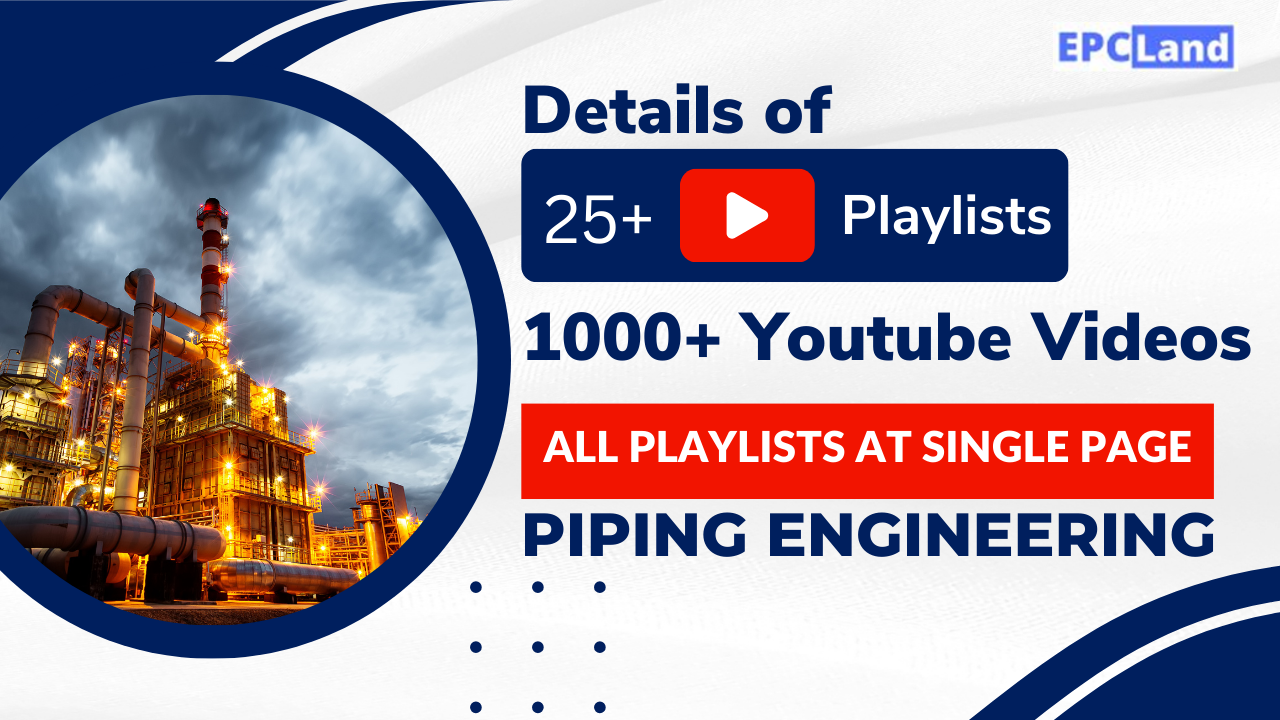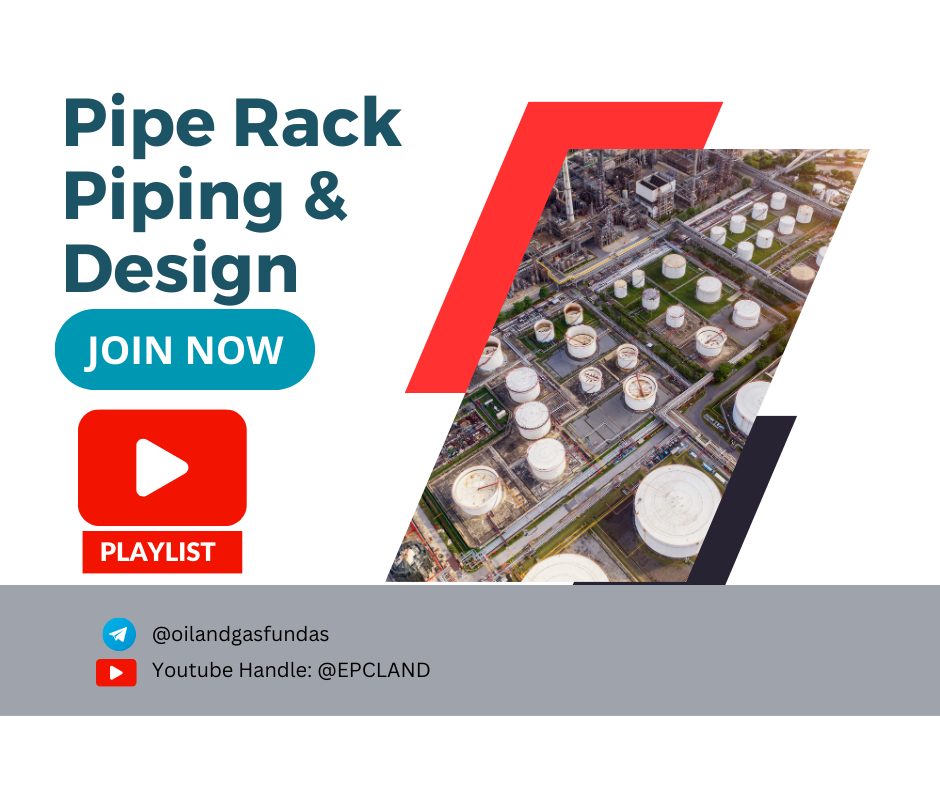Are you ready to dive into the world of piping engineering? Our curated YouTube playlists offer a wealth of knowledge on all aspects of this critical field. Whether you’re interested in mastering ASME B31.3 standards, understanding material selection, or exploring the intricacies of pressure design, our playlists have you covered. With informative videos covering a wide range of topics, these playlists are a valuable resource for both aspiring and experienced piping engineers. Join us on a journey through the complexities and nuances of process piping with these educational videos.
Table of Contents
Let’s check out the Published Playlists for 1000+ Videos
Do you know 1000+ YouTube Videos have been published on this channel.
Subscribe now
Join 100 Days Challenge (5 Minutes/20 MCQs with explanations per day)
Join Challenge

Check out thousands of YouTube Shorts on Piping Engineering
Click to check
Recommended courses (Published on EPCLand)
- Basics of Piping Engineering
- Piping Layout Engineering
- Piping Material Engineering
- Piping Stress Analysis
- Complete Course on Piping Engineering
- Material Requisitions
- Piping Material Specifications
- Valve Material Specifications
Don’t miss the published articles on following:
Attempt Quiz on Piping Engineering
Question 1:
What is the primary function of piping in industrial applications?
Explanation: The primary function of piping in industrial applications is to transport fluids and gases, such as water, chemicals, and steam, from one location to another.
Question 2:
What is a common material used for piping in high-temperature applications?
Explanation: Carbon steel is a common material used for piping in high-temperature applications due to its strength and heat resistance.
Question 3:
What does ASME B31.1 specify?
Explanation: ASME B31.1 specifies the requirements for the design, construction, inspection, and testing of piping systems for power plants, including steam and hot water systems.
Question 4:
What is a flange in piping engineering?
Explanation: A flange is a component used in piping engineering to connect two pipes or a pipe to a piece of equipment, such as a valve or a pump, by bolting them together.
Question 5:
What is the purpose of a pipe support in piping systems?
Explanation: The purpose of a pipe support in piping systems is to maintain the structural integrity of the piping system by preventing sagging, vibration, and excessive movement of the pipes.
Question 6:
Which type of valve is commonly used to control fluid flow in piping systems?
Explanation: Ball valves are commonly used to control fluid flow in piping systems due to their reliability and ease of operation.
Question 7:
What is the role of a pressure relief valve in piping systems?
Explanation: The role of a pressure relief valve in piping systems is to release excess pressure to prevent system overpressure and potential damage.
Question 8:
What is a common method for joining two pipes in piping systems?
Explanation: Welding is a common method for joining two pipes in piping systems, creating a strong and permanent connection.
Question 9:
What is the purpose of a pipe flange gasket?
Explanation: The purpose of a pipe flange gasket is to prevent leaks between flange connections by providing a seal that maintains fluid integrity.
Question 10:
What does the term “pipe schedule” refer to in piping engineering?
Explanation: In piping engineering, the term “pipe schedule” refers to a standardized system for classifying the wall thickness of pipes, which is important for pipe selection and design.






























